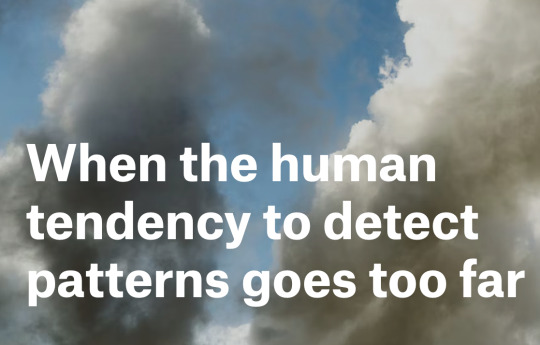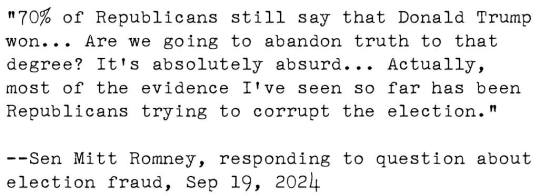#sep 19 2020
Explore tagged Tumblr posts
Text

happy 4th birthday to...
Punch Me! This Is A Nightmare! by Yasmin Nur!!
0 notes
Text
On this Yom Ha'Zikaron Le'Chalalei Ma'rachot Yisrael (Memorial Day for Israel's Fallen Soldiers and Terror Victims), I figured it's important to remember that Israeli victims did not exist solely on Oct 7. We have lost loved ones before and since. Here's a list with just one random victim to represent each year. Please scroll down the list to see how far back it goes.
(part 1/5, all parts in the reblogs)
2024: On Jan 7, we lost 19 years old Shai Garmai

2023: On Oct 7, we lost 28 years old Osama abu Madiam

2022: On Nov 23, we lost 18 years old Tiran Faro

2021: On May 12, we lost 5 years old Ido Avigal

2020: On Aug 26, we lost 39 years old Shai Ochayon

2019: On May 5, we lost 49 years old Zaid al-Chamamda

2018: On Dec 12, we lost Amiad Israel Yish Ran, who was murdered in his mother's womb

2017: On Nov 22, we lost 21 years old Hodaya Nechama Assoulin

2016: On Oct 25, we lost 14 years old Rami Namer abu Amar

2015: On Feb 17, we lost 4 years old Adelle Biton

2014: On Oct 22, we lost 2.5 months old Chaya Zissel Brown

2013: On Dec 24, we lost 22 years old Salech al-Din abu al-Atayef

2012: On Jul 18, we lost 28 years old Yitzchak Idan Kolangi

2011: On Apr 17, we lost 16 years old Daniel Aryeh Viplich

2010: On Feb 26, we lost 52 years old Netta Blatt Sorek

2009: On Apr 2, we lost 13 years old Shlomo Nativ

2008: On Mar 6, we lost 26 years old Doron Trunach Mahareta

2007: On Jun 17, we lost 85 years old Meir Cohen

2006: On Aug 10, we lost 4 years old Fatchi Assdi

2005: On Jul 12, we lost 16 years old Nofar Horvitz

2004: On Sep 29, we lost 2 years old Dorit Massarat Binsan

2003: On Sep 9, we lost 20 years old Naava Appelbom

2002: On Nov 10, we lost 4 years old Noam Levi Ochayon

2001: On Dec 12, we lost 42 years old Ester Avraham

2000: On Nov 21, we lost 19 years old Itamar Yefet

1999: On Jun 24, we lost 34 years old Tony Eliyahu Zanna

1998: On Dec 2, we lost 41 years old Osama Moussa abu Aisha

1997: On Mar 13, we lost 13 years old Natali Alkalai

1996: On Feb 25, we lost 57 years old Yitzchak Elbaz

1995: On Jul 24, we lost 60 years old Zehava Oren

As Tumblr limits a post to 30 images... part 1/5 - the next parts will be posted in the reblogs momentarily. Please check out the full list.
(for all of my updates and ask replies regarding Israel, click here)
#israel#antisemitism#israeli#israel news#israel under attack#israel under fire#terrorism#anti terrorism#hamas#antisemitic#antisemites#jews#jew#judaism#jumblr#frumblr#jewish#israelunderattack
275 notes
·
View notes
Text
And their private deliberations suggested that they were still grappling with how the White House should approach the strike. Biden’s team has privately weighed whether to dispatch a top lieutenant to the picket line to stand alongside the UAW workers, according to two people familiar with those discussions. The exact details of who might go or where they could travel are unclear. Yet even as they considered sending a public-facing official to the site of the strike, the White House was pulling back on some behind-the-scenes engagement. On Tuesday, the administration scrapped its plan to have two Biden aides head to Detroit this week to help both sides after union officials complained about it.[...]
There are many unknowns about Trump’s visit to Michigan, including where he will speak and whether he will show up to the picket line as well. But his decision to go in the first place startled some Democrats. “Trump scooped us. Now if we announce we’re going, it looks like we’re just going because of Trump,” said a national Democratic strategist. “We waited too long. That’s the challenge.”
19 Sep 23
The UAW endorsed Biden's 2020 bid for the White House but has not yet backed his reelection campaign.
22 Sep 23
I'm just happy they're both grovelling at the feet of labor 🥰 now remind me again why we need either of them
289 notes
·
View notes
Text
Reference archived on our website
Covid is an intersectional issue.
Abstract
Substantial racial/ethnic and gender disparities in COVID-19 mortality have been previously documented. However, few studies have investigated the impact of individual socioeconomic position (SEP) on these disparities.
Objectives: To determine the joint effects of SEP, race/ethnicity, and gender on the burden of COVID-19 mortality. A secondary objective was to determine whether differences in opportunities for remote work were correlated with COVID-19 death rates for sociodemographic groups.
Design: Annual mortality study which used a special government tabulation of 2020 COVID-19-related deaths stratified by decedents’ SEP (measured by educational attainment), gender, and race/ethnicity. Setting: United States in 2020. Participants: COVID-19 decedents aged 25 to 64 years old (n = 69,001). Exposures: Socioeconomic position (low, intermediate, and high), race/ethnicity (Hispanic, Black, Asian, Indigenous, multiracial, and non-Hispanic white), and gender (women and men). Detailed census data on occupations held by adults in 2020 in each of the 36 sociodemographic groups studied were used to quantify the possibility of remote work for each group.
Main Outcomes and Measures: Age-adjusted COVID-19 death rates for 36 sociodemographic groups. Disparities were quantified by relative risks and 95% confidence intervals. High-SEP adults were the (low-risk) referent group for all relative risk calculations. Results: A higher proportion of Hispanics, Blacks, and Indigenous people were in a low SEP in 2020, compared with whites. COVID-19 mortality was five times higher for low vs. high-SEP adults (72.2 vs. 14.6 deaths per 100,000, RR = 4.94, 95% CI 4.82–5.05). The joint detriments of low SEP, Hispanic ethnicity, and male gender resulted in a COVID-19 death rate which was over 27 times higher (178.0 vs. 6.5 deaths/100,000, RR = 27.4, 95% CI 25.9–28.9) for low-SEP Hispanic men vs. high-SEP white women. In regression modeling, percent of the labor force in never remote jobs explained 72% of the variance in COVID-19 death rates.
Conclusions and Relevance: SARS-CoV-2 infection control efforts should prioritize low-SEP adults (i.e., the working class), particularly the majority with “never remote” jobs characterized by inflexible and unsafe working conditions (i.e., blue collar, service, and retail sales workers).
#mask up#covid#pandemic#covid 19#wear a mask#public health#coronavirus#sars cov 2#still coviding#wear a respirator#race#gender
15 notes
·
View notes
Text
Effortpost registry
The general linear group as a Hopf algebra; 31 oct 2024
Zariski topologies; 14 oct 2024
On integer multiplication and endomorphism algebras; 2 sep 2024
Recommendations for learning category theory; 28 mar 2024
The hairy ball theorem and stably free modules; 11 feb 2024
Topological connectedness and generalized paths; 24 nov 2023
Graphs as presheaves 3: subobject classifiers; 19 oct 2023
Effortpost registry; 18 oct 2023
Graphs as presheaves 2: limits and colimits; 11 oct 2023
Hydrogen bomb vs. coughing baby: graphs and the Yoneda embedding; 7 oct 2023
Extending the D ⊣ U ⊣ I adjunction sequence; 23 sep 2023
The Riemann rearrangement theorem and net convergence; 18 sep 2023
Thoughts on the axiom of choice; 18 feb 2023
Topological spaces and simple graphs as neighbourhood spaces; 15 feb 2023
What is a space?; 10 jan 2023
The exponential function applied to sets; 24 dec 2022
On nilpotent eigenvalues; 23 dec 2022
But IS the empty space connected?; 11 nov 2022
Monads monads monads; 8 nov 2022
Calculating what the triangle identities mean for a bunch of adjunctions and being amazed when it works every time; 7 nov 2022
Defining the Lebesgue integral as a net limit; 27 jul 2022
Rambles about describable sets; 28 oct 2021
Functions with cycling derivatives; 30 aug 2021
Why the rationals have zero length; 31 may 2021
An infinite cardinal valued random variable; 30 may 2021
A field-based functor; 20 mar 2021
Generalized sides; 13 mar 2021
Rambles about metric convexity; 22 feb 2021
Wiggle function convergence; 28 jan 2021
Rambles about infinity; 5 sep 2020
Generalized golf; 24 jun 2020
Rambles about continuousifying series; 10 may 2020
Rambles about being closed under exponentiation; 7 may 2020
Rambles about the groups that come with fields; 3 may 2020
A compilation of donutified functions; 17 mar 2020
Rambles about arithmetic functions; 24 jan 2020
Graphing real functions on a torus >:); 29 nov 2019
73 notes
·
View notes
Text
⎯⎯⎯⎯⎯⎯⎯⎯⎯⎯⎯ [𝐞𝐧𝐠]
welcome to 𝒔𝒕𝒂𝒗𝒓𝒐𝒈𝒖𝒊𝒏𝒆, a blog on which i regularly post 𝐟͟𝐫͟𝐞͟𝐞 𝐠𝐨𝐨𝐠𝐥𝐞 𝐝𝐨𝐜𝐬 𝐭𝐞𝐦𝐩𝐥𝐚𝐭𝐞𝐬. 𝒇𝒓𝒆𝒏𝒄𝒉, i'm not 𝑓𝑙𝑢𝑒𝑛𝑡 𝑒𝑛𝑜𝑢𝑔𝘩 in english to pretend to use it in my posts ― which is why most of them will be 𝗲𝘅𝗰𝗹𝘂𝘀𝗶𝘃𝗲𝗹𝘆 in my 𝑛𝑎𝑡𝑖𝑣𝑒 𝑡𝑜𝑛𝑔𝑢𝑒. 𝑖𝑓 𝑦𝑜𝑢 ℎ𝑎𝑣𝑒 𝑎𝑛𝑦 𝑞𝑢𝑒𝑠𝑡𝑖𝑜𝑛𝑠, fell free to send me a 𝗽𝗿𝗶𝘃𝗮𝘁𝗲 𝗺𝗲𝘀𝘀𝗮𝗴𝗲. 𝑡𝘩𝑎𝑛𝑘 𝑦𝑜𝑢 𝑣𝑒𝑟𝑦 𝑚𝑢𝑐𝘩 !
⎯⎯⎯⎯⎯⎯⎯⎯⎯⎯⎯ [𝐟𝐫]
bon et bien. j'imagine qu'on repasse en mode 𝒇𝒓𝒂𝒏𝒄̧𝒂𝒊𝒔. sur internet, mon pseudonyme est 𝒔𝒕𝒂𝒗𝒓𝒐𝒈𝒖𝒊𝒏𝒆. pour me présenter brièvement, je suis surtout actif dans la sphère francophone du 𝐫𝐩 𝐝𝐢𝐬𝐜𝐨𝐫𝐝 ― là où j'ai appris à développer depuis approximativement 𝘁𝗿𝗼𝗶𝘀 𝗮𝗻𝘀 une certaine maîtrise de la plateforme 𝐠𝐨𝐨𝐠𝐥𝐞 𝐝𝐨𝐜. tous mes 𝐭𝐞𝐦𝐩𝐥𝐚𝐭𝐞𝐬 sont 𝗴͟𝗿͟𝗮͟𝘁͟𝘂͟𝗶͟𝘁͟𝘀. je n'ai pas la prétention de faire un travail qui vaut nécessairement de l'argent et je considère qu'il y a trop peu de modèles non-onéreux pour ceux et celles qui n'ont pas les moyens d'investir dans des fiches pour ne pas proposer une alternative libre-service. néanmoins, qui dit libre-service ne veut pas dire que vous obtenez la paternité de votre 𝐠𝐨𝐨𝐠𝐥𝐞 𝐝𝐨𝐜. mon expérience dans la niche française sait que de nombreux roublards n'hésitent pas à retirer les crédits de mes fiches en connaissance de cause ― ce qui, généralement, provoque en moins un certain dégoût pour la cause que j'entends servir. alors si vous souhaitez me souvenir, il n'y a pas de secret : 𝐥𝐢𝐤𝐞𝐳 et 𝐫𝐞𝐛𝐥𝐨𝐠𝐮𝐞𝐳 pour qu'on puisse braquer ce système mercantile et prouver qu'on n'a pas besoin de faire payer des 𝐭𝐞𝐦𝐩𝐥𝐚𝐭𝐞𝐬 pour que les créateurs soient respectés comme ils le devraient être.
⎯⎯⎯⎯⎯⎯⎯⎯⎯⎯⎯ your dearest friend, 𝒔𝒕𝒂𝒗𝒓𝒐𝒈𝒖𝒊𝒏𝒆.
ㅤㅤ𝑵𝑨𝑽𝑰𝑮𝑨𝑻𝑰𝑶𝑵 ↴
ㅤㅤ┍⎯⎯⎯⎯⎯⎯⎯⎯⎯⎯⎯⎯⎯⎯⎯⎯⎯⎯⎯⎯⎯⎯⎯⎯⎯⎯⎯⎯⎯⎯⎯⎯⎯⎯⎯⎯⎯⎯⎯ · · · ·
ㅤㅤㅤㅤ𝐎𝟏 ⎯⎯⎯⎯⎯ 𝐁𝐋𝐔𝐄 𝐕𝐄𝐋𝐕𝐄𝐓 (26 OCT. 2020)
ㅤㅤㅤㅤ𝐎𝟐 ⎯⎯⎯⎯⎯ 𝐒𝐋𝐄𝐄𝐏𝐘 𝐇𝐎𝐋𝐋𝐎𝐖 (19 JUN. 2021)
ㅤㅤㅤㅤ𝐎𝟑 ⎯⎯⎯⎯⎯ 𝐓𝐇𝐄 𝐆𝐑𝐀𝐘 𝐌𝐀𝐍 (28 AUG. 2021)
ㅤㅤㅤㅤ𝐎𝟒 ⎯⎯⎯⎯⎯ 𝐖𝐀𝐓𝐂𝐇 𝐓𝐇𝐄 𝐓𝐇𝐑𝐎𝐍𝐄 (9 AUG. 2021)
ㅤㅤㅤㅤ𝐎𝟓 ⎯⎯⎯⎯⎯ 𝐖𝐑𝐀𝐓𝐇 𝐎𝐅 𝐆𝐎𝐃 (12 JAN. 2022)
ㅤㅤㅤㅤ𝐎𝟔 ⎯⎯⎯⎯⎯ 𝐃𝐄𝐕𝐈𝐋 𝐀𝐋𝐋 𝐓𝐇𝐄 𝐓𝐈𝐌𝐄 (12 MAR. 2022)
ㅤㅤㅤㅤ𝐎𝟕 ⎯⎯⎯⎯⎯ 𝐄𝐌𝐌𝐀 (27 DEC. 2022)
ㅤㅤㅤㅤ𝐎𝟖 ⎯⎯⎯⎯⎯ 𝐓𝐇𝐄 𝟒𝟎𝟎 𝐁𝐋𝐎𝐖𝐒 (26 MAR. 2023)
ㅤㅤㅤㅤ𝐎𝟗 ⎯⎯⎯⎯⎯ 𝐃𝐎𝐖𝐍 𝐁𝐘 𝐋𝐀𝐖 (27 JUN. 2023)
ㅤㅤㅤㅤ𝟏𝐎 ⎯⎯⎯⎯⎯ 𝐃𝐄𝐀𝐃 𝐌𝐀𝐍 (20 SEP. 2023)
ㅤㅤㅤㅤ𝟏𝟏 ⎯⎯⎯⎯⎯ 𝐀𝐒 𝐈 𝐖𝐀𝐒 𝐌𝐎𝐕𝐈𝐍𝐆 𝐈 𝐒𝐀𝐖 𝐎𝐂𝐂𝐀𝐒𝐈𝐎𝐍𝐀𝐋𝐋𝐘 𝐁𝐑𝐈𝐄𝐅 𝐆𝐋𝐈𝐌𝐏𝐒𝐄𝐒 𝐎𝐅 𝐁𝐄𝐀𝐔𝐓𝐘 (18 APR. 2024).
ㅤㅤㅤㅤ𝟏𝟏 𝐁𝐈𝐒 ⎯⎯⎯⎯⎯ 𝐖𝐀𝐓𝐂𝐇 𝐓𝐇𝐄 𝐓𝐇𝐑𝐎𝐍𝐄 𝐈𝐈 (30 APR. 2024)
ㅤㅤ · · · · ⎯⎯⎯⎯⎯⎯⎯⎯⎯⎯⎯⎯⎯⎯⎯⎯⎯⎯⎯⎯⎯⎯⎯⎯⎯⎯⎯⎯⎯⎯⎯⎯⎯⎯⎯⎯⎯⎯⎯┛
#google docs#template#gdocs#rp template#oc sheet#rp resources#gdoc template#discord template#character sheet#discord roleplay#google docs template#oc template#character resources#google doc template#character doc#gdocs template
62 notes
·
View notes
Text

When the human tendency to detect patterns goes too far (Shayla Love, Psyche, Sep 19 2023)
"Nabokov was describing an extreme case of apophenia, or the tendency to experience events as meaningful, even when they shouldn’t be.
Also called patternicity, ‘it refers to essentially anytime that you are seeing patterns in the world that don’t exist,’ says Colin DeYoung, a professor of psychology at the University of Minnesota. (…)
The word ‘apophenia’ comes from a German neurologist, Klaus Conrad, and his 1958 book about the symptoms of schizophrenia.
While an epiphany is a sudden realisation of a true connection or meaning, an ‘apophany’ is the false realisation of one.
The psychoanalyst Carl Jung used what is perhaps a better-known term, ‘synchronicity’, to describe instances of apparent connection between co-occurring events with no clear causal relationship.
More than just coincidences, they take on powerful meaning in a person’s mind and appear to be a result of more than chance.
In one example, Jung’s patient dreamt of a golden scarab and, as she described the beetle, Jung heard a tapping on the window of his office.
There, he found a live scarab beetle, which he grabbed and handed to her.
Psychologists have found an association between apophenia and openness to experience, one of the ‘big five’ personality traits.
Openness to experience reflects a general tendency to be curious about the world.
As a 2020 paper by DeYoung and colleagues explained, one aspect of openness to experience ‘encompasses fantasy-proneness and aesthetic interests’, whereas another aspect, sometimes called ‘intellect’, reflects ‘intellectual confidence and intellectual engagement’.
In many contexts, openness is beneficial and can contribute to creativity.
But the component of the trait related to aesthetic and fantasy engagement also seems to be associated with increased risk of some of the symptoms of the psychosis spectrum, such as unusual perceptual experiences, DeYoung and colleagues have found.
They report evidence that apophenia could be ‘an important cognitive mechanism at the core of what is shared between openness and risk for psychosis.’
Seeing connections all around you can also be predictive of belief in conspiracy theories and the supernatural, a study from 2017 suggested. (…)
There is always a trade-off.
People need to be able to detect important connections in the world, rather than missing them, and being sensitive to patterns helps with that.
People who are high in openness and more prone to perceiving patterns ‘might see things that other people might not notice’, DeYoung says.
But sometimes, a sensitivity to patterns can fool us. Minimising the risk of the false positives would inevitably lead to more false negatives, DeYoung notes: ‘You’re always stuck with some kind of balance.’"
61 notes
·
View notes
Text



this is a masterlist of claire-related posts/edits/art. this follows a somewhat chronological order of events, with the first link being the earliest point on her timeline (so far). only plot/character development posts. i’ve organised it in three different parts: pre-hollywood u, throughout the game's timeframe, and post-hollywood u. my timeline for hollywood u has her freshman year at sept/2012 and her graduation at may/2016. most of it is canon compliant but i change things i dislike to fit my interpretation of the timeline. this list will be constantly updated/modified.
general/misc
• claire swanson oc tag • claire swanson inspo side blog • claire’s introduction post (03/10/24) • claire’s ref sheet (04/25/24) • swanson/stewart family tree • claire’s playlist • claire's letterboxd list (09/19/24) • claire’s filmography (provisional post; 08/19/24)
pre hollywood u (feb/1990 — sep/2012)
• newspaper clipping of claire’s first big role (apr/2002) • claire’s myspace profile page (sep/2009)
hollywood u (sep/2012 — may/2016)
• welcome to hollywood (u) (2012) • hollywood u outfits, part 1 (nd) • hollywood u outfits, part 2 (nd) • claire’s driver’s license (ago/2014) • "clash at sunset" credit cards (jan/2015) • claire for vogue: what's in my bag? (july/2015) • "ticket to ride" film poster (2016)
post hollywood u (may/2016 — present)
• "out of time" letterboxd page (2017) • claire’s films credit cards (2017-2019) • claire’s wikipedia article (2019) • claire’s award list (up to 2020)

9 notes
·
View notes
Text

* * * *
LETTERS FROM AN AMERICAN
September 19, 2024
Heather Cox Richardson
Sep 20, 2024
Yesterday morning, NPR reported that U.S. public health data are showing a dramatic drop in deaths from drug overdoses for the first time in decades. Between April 2023 and April 2024, deaths from street drugs are down 10.6%, with some researchers saying that when federal surveys are updated, the decline will be even more pronounced. Such a decline would translate to 20,000 deaths averted.
With more than 70,000 Americans dying of opioid overdoses in 2020 and numbers rising, the Biden-Harris administration prioritized disrupting the supply of illicit fentanyl and other synthetic drugs. They worked to seize the drugs at ports of entry, sanctioned more than 300 foreign people and agencies engaged in the global trade in illicit drugs, and arrested and prosecuted dozens of high-level Mexican drug traffickers and money launderers.
In March 2023 the Biden-Harris administration made naloxone, a medicine that can prevent fatal opioid overdoses, available over the counter. The administration invested more than $82 billion in treatment, and the Department of Health and Human Services worked to get the treatment into the hands of first responders and family members.
Addressing the crisis of opioid deaths meant careful, coordinated policies.
Also today, markets all over the world climbed after the Fed yesterday cut interest rates for the first time in four years. In the U.S., the S&P 500, which tracks the stock performance of 500 of the biggest companies on U.S. stock exchanges, the Nasdaq Composite, which is weighted toward the information technology sector, and the Dow Jones Industrial Average, an older index that tracks 30 prominent companies listed on U.S. stock exchanges, all hit new records. The rate cut indicated to traders that the U.S. has, in fact, managed to pull off the soft landing President Joe Biden and Treasury Secretary Janet Yellen worked to achieve. They have kept job growth steady, normalized economic growth and inflation, and avoided a recession.
As they have done so, the major U.S. stock indices have had what The Guardian's Callum Jones calls “an extraordinary year.” Jones notes that the S&P 500 is up more than 20% since the beginning of 2024, the Nasdaq Composite has risen 22%, and the Dow Jones Industrial Average has gone up 11%.
Bringing the U.S. economy out of the pandemic more successfully than any other major economically developed country meant clear goals and principles, and careful, informed adjustments.
And yet the big story today is that Republican North Carolina lieutenant governor Mark Robinson frequented porn sites, where between 2008 and 2012 he wrote that he enjoyed watching transgender pornography; referred to himself as a “black NAZI!”; called for reinstating human enslavement and wrote, “I would certainly buy a few”; called the Reverend Dr. Martin Luther King Jr. a “f*cking commie bastard”; wrote that he preferred Adolf Hitler to former president Barack Obama; referred to Black, Jewish, Muslim, and gay people with slurs; said he doesn’t care about abortions (“I don’t care. I just wanna see the sex tape!” he wrote); and recounted that he had secretly watched women in the showers in a public gym as a 14-year-old. Andrew Kaczynski and Em Steck of CNN, who broke the story, noted that “CNN is reporting only a small portion of Robinson’s comments on the website given their graphic nature.”
After the first story broke, Natalie Allison of Politico broke another: that Robinson was registered on the Ashley Madison website, which caters to married people seeking affairs.
Robinson is running for governor of North Carolina. He has attacked transgender rights, called for a six-week abortion ban without exceptions for rape or incest, mocked survivors of school shootings, and—after identifying a wide range of those he saw as enemies to America and to “conservatives”—told a church audience that “some folks need killing.”
That this scandal dropped on the last possible day Robinson could drop out of the race suggests it was pushed by Republicans themselves because they recognize that Robinson is dragging Trump and other Republican candidates down in North Carolina. But here’s the thing: Republican voters knew who Robinson was, and they chose him anyway.
Indeed, his behavior is not all that different from that of a number of the Republican candidates in this cycle, including former president Trump, the Republican nominee for president. Representative Virginia Foxx (R-NC) embraced Robinson’s candidacy, and House speaker Mike Johnson (R-LA) welcomed “NC’s outstanding Lt. Governor” to a Republican-led House Judiciary Committee meeting “on the importance of election integrity.” “He brought the truth with clarity and conviction—and everyone should hear what he had to say!” Johnson posted to social media. Robinson spoke at the Republican National Convention.
The difference between the Democrats and the Republicans in this election is stark, and it reflects a systemic problem that has been growing in the U.S. since the 1980s.
Democracy depends on at least two healthy political parties that can compete for voters on a level playing field. Although the men who wrote the Constitution hated the idea of political parties, they quickly figured out that parties tie voters to the mechanics of Congress and the presidency.
And they do far more than that. Before political thinkers legitimized the idea of political opposition to the king, disagreeing with the person in charge usually led to execution or banishment for treason. Parties allowed for the idea of loyal and legitimate opposition, which in turn allowed for the peaceful transition of power. That peaceful exchange enabled the people to choose their leaders and leaders to relinquish power safely. Parties also create a system for criticizing people in power, which helps to weed out corrupt or unfit leaders.
But those benefits of a party system depend on a level political playing field for everyone, so that a party must constantly compete for voters by testing which policies are most popular and getting rid of the corrupt or unstable leaders voters would reject.
In the 1980s, radical Republican leaders set out to dismantle the government that regulated business, provided a basic social safety net, promoted infrastructure, and protected civil rights. But that system was popular, and to overcome the majority who favored it, they began to tip the political playing field in their direction. They began to suppress voting by Democrats by insisting that Democrats were engaging in “voter fraud.” At the same time, they worked to delegitimize their opponents by calling them “socialists” or “communists” and claiming that they were trying to destroy the United States. By the 1990s, extremists in the party were taking power by purging traditional Republicans from it.
And yet, voters still elected Democrats, and after they put President Barack Obama into the White House in 2008, the Republican State Leadership Committee in 2010 launched Operation REDMAP, or Redistricting Majority Project. The plan was to take over state legislatures so Republicans would control the new district maps drawn after the 2010 census, especially in swing states like Florida, Michigan, Ohio, Pennsylvania, and Wisconsin. It worked, and Republican legislatures in those states and elsewhere carved up state maps into dramatically gerrymandered districts.
In those districts, the Republican candidates were virtually guaranteed election, so they focused not on attracting voters with popular policies but on amplifying increasingly extreme talking points to excite the party’s base. That drove the party farther and farther to the right. By 2012, political scientists Thomas Mann and Norm Ornstein warned that the Republican Party had “become an insurgent outlier in American politics. It is ideologically extreme; scornful of compromise; unmoved by conventional understanding of facts, evidence and science; and dismissive of the legitimacy of its political opposition.”
At the same time, the skewed playing field meant that candidates who were corrupt or bonkers did not get removed from the political mix after opponents pounced on their misdeeds and misstatements, as they would have been in a healthy system. Social media poster scary lawyerguy noted that the story about Robinson will divert attention from the lies about Haitian immigrants eating pets, which diverted attention from Trump’s abysmal debate performance, which diverted attention from Trump’s filming a campaign ad at Arlington National Cemetery.
When a political party has so thoroughly walled itself off from the majority, there are two options. One is to become full-on authoritarian and suppress the majority, often with violence. Such a plan is in Project 2025, which calls for a strong executive to take control of the military and the judicial system and to use that power to impose his will.
The other option is that enough people in the majority reject the extremists to create a backlash that not only replaces them, but also establishes a level playing field.
The Republican Party is facing the reality that it has become so extreme it is hemorrhaging former supporters and mobilizing a range of critics. Today the Catholic Conference of Ohio rebuked those who spread lies about Haitian immigrants—Republican presidential candidate Trump and vice presidential candidate J.D. Vance were the leading culprits—and Teamsters councils have rejected the decision of the union’s board not to make an endorsement this year and have endorsed Democratic presidential candidate Vice President Kamala Harris. Some white evangelicals are also distancing themselves from Trump.
And then, tonight, Trump told a Jewish group that if he loses, it will be the fault of Jewish Americans. "I will put it to you very simply and gently: I really haven't been treated right, but you haven't been treated right because you're putting yourself in great danger."
Mark Robinson has said he will not step aside.
LETTERS FROM AN AMERICAN
HEATHER COX RICHARDSON
#Letters From An American#Heather Cox Richardson#Trump lies#Biden Administration accomplishments#support for Harris/Walz#political parties#gerrymandering#REDMAP#Teamsters#Mark Robinson#opiod overdoses#American History#Radical Republicans
8 notes
·
View notes
Text
Sep 19, 2023 8:30am PT
Louis Tomlinson’s ‘All Of Those Voices’ Sets Paramount+ Release Date (EXCLUSIVE)
'All Of Those Voices' will be available to stream on Paramount+ in October.
By Thania Garcia

Louis Tomlinson’s feature-length documentary, “All Of Those Voices” will be available to stream on Paramount+ starting Oct. 4 in the United States and Canada.
The documentary, which was released in select theaters earlier this March, gives an intimate look at the former One Direction member’s life and musical career. It was directed by Charlie Lightening, who helmed Liam Gallagher’s “As It Was,” and produced in partnership with 78 Productions and Trafalgar Releasing. It will also be available to stream on Paramount+ in the U.K., Australia, Latin America, Brazil, Italy, France, Germany, Switzerland, Austria and South Korea starting Oct. 5.
“I’m really excited to announce that ‘All Of Those Voices’ will be available to stream on Paramount+,” said Tomlinson in a statement. “This film means everything to me, and I’m looking forward to having it out there in the world!”
The film explores Tomlinson’s personal struggles with loss and his journey from a member of One Direction to a solo artist. After releasing his debut album “Walls” in 2020, and his follow-up “Faith In The Future” in 2022, Tomlinson chose to pull back the curtain in this documentary film showing a much more intimate side of him that his fans hadn’t had a chance to engage with since the storied boy band he grew up in disbanded in 2015.
“This has been something I’ve been working on for years, I’m really excited to finally put it out into the world,” said Tomlinson in a press release at the time of the film’s announce. “I’ve said it a million times but I’m lucky enough to have the greatest fans an artist could wish for, and as they always go above and beyond for me, I wanted to share my story ‘in my own words’.”
youtube
40 notes
·
View notes
Text
Last post of good-natured silliness regarding Mile and Apo's trips! (the first can be found here and the second here)
Jul 28, Mile posted a pic from the car in Paris in the rain set to Jazz (his and Apo's fave music genre). Then he started posting from flying back to and landing in Bangkok. He was wearing the same cap with a big 'A' on it that he wore during departure on Jul 19, even though weather wise, that cap didn't make sense then and even less so now.
When he left:

And as he returned:

This is kinda similar to Apo, who wore his trinket necklace both when he departed Bangkok on Jul 19 and when he came back on Jul 25. It has two silver circle rings, joined by a heart pendant.
Apo when leaving:

And upon returning:

Back on Jul 6, when they went to Song Wat together, I noticed these joined rings and that, because most of the time the heart holds the two together, it makes them look a lot like Mile's double circle silver ring, which he has had for years, way before KPTS.

While Mile's ring is obviously not connected to Apo, I did wonder when Apo started wearing his trinket necklace which includes this pair of joined rings, and whether they might intentionally have been chosen for their similarity to Mile's (once locked together with a heart). I can't actually answer any of these questions, other than to tell you that Apo doesn't seem to have worn these rings before he re-met Mile in Oct 2020. At least I couldn't find any evidence that he did, not on his fingers and not on his necklace (though he did wear other necklaces). The first time I could find him wearing the joined rings on the trinket necklace is a pic Apo shared on Sep 13, 2021:

He's also wearing it in a pic he shared Sep 16, 2021, you can see it a bit better there (especially since on Jan 10, 2022 he posted another pic from the same occasion where the necklace with the rings and heart is even clearer). Also, as far as I can tell, Apo changes the trinkets he wears with the paired rings, but he always wears those. Make of all this what you will...


Mile posted a vid on Facebook from the plane as it approached Bangkok, captioned it with text about saving money to construct, buy and decorate a house, and added this post to his "Happiness during the day" album:

He also pasted the same text about saving money for a house onto a vid of an apartment with a view of NYC, which he shared on his personal IG, and we all know who loves that city and even lived there for 7 months...

After landing, Mile posted on IG pics and vids from the Eiffel Tower in the rain on Jul 27, and he captioned them with "Something is more romantic with rain... #LikeYou ^^". Within 13 minutes, Apo liked the post and commented, "Very romantic."

Mind you, the entire 10 days they've been apart, neither one of them used the word "romantic" in any of their captions. While Mile WAS ACTUALLY IN Paris, at the Eiffel Tower, in the rain, he didn't use the word "romantic," but he did right away after he returned to Thailand.
Apo posted on IG 15 minutes after Mile did, sharing pics from Jul 21 in China, and he captioned them "Sleep no more." Except unlike me, Apo capitalized every first letter of each word, which is what Mile always does with his own captions in English. Mile commented not long after with "Cool."

Another thing to note is the day before, Jul 28, as Mile was flying back to Thailand, Apo posted a pic from China, from Jul 23, where he's doing a half heart, and he captioned it, "Miss you."


Just as a bonus... On the same day, while Mile was flying back to Bangkok, his mom posted multiple pics and vids of herself in a green shirt (Mile's color) and yellow pants (Apo's color).
Wait, bonus #2! Mile also mentioned returning very soon. Pond replied to a photographer that he'll see him in September. The Paris Fashion Week 2023 starts on Sep 25, so we might get some more Mileapo in Paris then.

Did I miss anything? Probably, there's been a lot. But I hope this series of posts made you smile! You can find more of my Kinnporsche/Mileapo stuff under this tag. xoxox
#mileapo#mkp#mile phakphum#mile phakphum romsaithong#phakphum romsaithong#apo nattawin#apo nattawin wattanagitiphat#nattawin wattanagitiphat#man suang#man suang cast#kinnporsche#kinnporsche cast#kinnporsche the cast#kpts cast#kpts the cast#the dots i've connected them
94 notes
·
View notes
Note
I had a sudden wave of "I miss BTS" today but not the BTS of today if that makes sense? I miss how they used to be. BTS were never perfect and I'm sure I'd find loads of things to be annoyed at today if I'm super involved in the fandom but still, their chemistry was amazing when they were together. I see people talking about how they can't wait for BTS to be back together and they'll reference clips of them but it's so rare for those clips to be from 2020 and later. I'm talking about their dynamic specifically - in terms of entertainment their newer content isn't terrible but there used to be an x factor to their dynamic that really set them apart in the past. Nowadays they seem like a regular group of friends which is fine too ig but that special sauce is missing.
I remember one anon said (I'm not sure if it's your blog or another) about how armys cling to old narratives and can't accept that the members have changed but that makes sense because it's easy to accept change when the new thing is better than the old but in our case that's not the situation. Whether it's music or relationships or personality, old BTS (after they'd matured some and gotten some media training to be sure) was better than their current incarnations imo. Of course Jimin is the only exception here for me which is probably my bias speaking? But he wasn't my initial bias or my only bias so perhaps me liking only him now seems like a side effect rather than having solo blinders.
Sorry for suddenly introducing this topic. I was watching some old edits and I realised how much new bangtan edits are just thirst traps nowadays. Even the fandom has kind of degraded in that sense - with respect to charting and honestly also how much entertainment they get from just being in fandom. Maybe I'm just feeling doomsdayish since they're all enlisted and the fandoms a bit inactive even though they've been churning out solo stuff nonstop.
Also missing Jimin is a big factor to my general despondence. I know his promo completely sucked during face but at least he tried to give us as much as he could from his side like dance performances or variety show appearances or infrequently coming on live and just talking or doing tiktoks. It wasn't anything major but it was nice going through face era side by side with Jimin and I'm really missing him during muse era. His absence is so much more conspicuous than I thought it would be.
For all the jikook show will cause every degenerate Jimin anti to come out of the woodwork next month, and as much as JK in general annoys me nowadays, if I can see Jimin for 8 x 30-60 minute episodes, then I'm looking forward to it. July 19 with muse and then aug 8 - sep 19 for the show. And then maybe I'll take a break from the whole BTS thing because without Jimin around, things feel a lil bleak I can't lie
I get you and I agree.
14 notes
·
View notes
Text
All Events
Magnus Protocol timeline
1684, Mar 21 - Isaac's crystal tree
1831, Nov 19 - Merchant of Fear
1989, ?? - Forton Service Station shut down
1995, ?? - Antony Walker
1997, Nov 30 - Doppelganger murder
1998, Jan 14 - Dice of Fate Statement given
1999, ?? - Magnus Institute burned down
2009, ?? - Voyeur released
2009, April 3 - Doctor turns into tree
2015, Jun # - OPT, Hilltop Branch events start
2015, Nov 13 - First volunteer to Hilltop center
2015, Nov 14 - Volunteer day 1
2015, Nov 26 - Volunteer 2 arrives
2015, Nov 28 - Volunteers 3 & 4 arrives
2015, Nov 30 - 4 more volunteers
2015, Dec 1 - OPT, Hilltop Branch events end
2016, Feb 3 - Oxford People’s Trust, Hilltop branch
2020, Jan 6 - Exhumed tattooed corps
2021, Aug 6 - Mr. Bonzo Interview
2022, April 10 - Trespass at Magnus Institute (1)
2022, May 12 - Dolls, Watching (Human Skin)
2022, May 12 - Regretful Reanimation
2022, Sep 23 - Canvas person, Tattoo
2023, ?? - FR3-D1 starts reading statements
2023, Jan 10 - Voyeur screening
2023, Jul 12 - Liminal Architecture
2023, Oct 30 - MAGP16 tattooed by Ink5oul
2023, Dec 19 - MAGP16 Ink5oul graverobbing
2024, Jan 3 - MAGP16 Statement giver dead*
2024, Jan 9 - Sam’s First Day
2024, Jan 18 - MAGP2
2024, Jan 22 - MAGP3
2024, Jan 29 - MAGP4
2024, Feb 5 - MAGP5
2024, Feb 9 - Needles person calls cops
2024, Feb 12 - Celia’s First Day & MAGP7
2024, Feb 28 - MAGP8
2024, Mar 8 - MAGP9
2024, Mar 9 - MAGP10
2024, Mar 9 - Mr. Bonzo attack at bar
2024, Mar 11 - MAGP11
2024, Mar 13 - MAGP12
2024, Mar 14 - MAGP13
2024, Mar 15 - MAGP14
2024, Mar 20 - Autopsy on talking woman
2024, Mar 22 - MAGP15
2024, Mar 25 - MAGP16
2024, April 4 - MAGP17
2024, April 10 - MAGP18
2024, April 11 - MAGP19
*A guess or current theory
[Updated through MAGP19]
9 notes
·
View notes
Text
September 19, 2024
HEATHER COX RICHARDSON
SEP 20
Yesterday morning, NPR reported that U.S. public health data are showing a dramatic drop in deaths from drug overdoses for the first time in decades. Between April 2023 and April 2024, deaths from street drugs are down 10.6%, with some researchers saying that when federal surveys are updated, the decline will be even more pronounced. Such a decline would translate to 20,000 deaths averted.
With more than 70,000 Americans dying of opioid overdoses in 2020 and numbers rising, the Biden-Harris administration prioritized disrupting the supply of illicit fentanyl and other synthetic drugs. They worked to seize the drugs at ports of entry, sanctioned more than 300 foreign people and agencies engaged in the global trade in illicit drugs, and arrested and prosecuted dozens of high-level Mexican drug traffickers and money launderers.
In March 2023 the Biden-Harris administration made naloxone, a medicine that can prevent fatal opioid overdoses, available over the counter. The administration invested more than $82 billion in treatment, and the Department of Health and Human Services worked to get the treatment into the hands of first responders and family members.
Addressing the crisis of opioid deaths meant careful, coordinated policies.
Also today, markets all over the world climbed after the Fed yesterday cut interest rates for the first time in four years. In the U.S., the S&P 500, which tracks the stock performance of 500 of the biggest companies on U.S. stock exchanges, the Nasdaq Composite, which is weighted toward the information technology sector, and the Dow Jones Industrial Average, an older index that tracks 30 prominent companies listed on U.S. stock exchanges, all hit new records. The rate cut indicated to traders that the U.S. has, in fact, managed to pull off the soft landing President Joe Biden and Treasury Secretary Janet Yellen worked to achieve. They have kept job growth steady, normalized economic growth and inflation, and avoided a recession.
As they have done so, the major U.S. stock indices have had what The Guardian's Callum Jones calls “an extraordinary year.” Jones notes that the S&P 500 is up more than 20% since the beginning of 2024, the Nasdaq Composite has risen 22%, and the Dow Jones Industrial Average has gone up 11%.
Bringing the U.S. economy out of the pandemic more successfully than any other major economically developed country meant clear goals and principles, and careful, informed adjustments.
And yet the big story today is that Republican North Carolina lieutenant governor Mark Robinson frequented porn sites, where between 2008 and 2012 he wrote that he enjoyed watching transgender pornography; referred to himself as a “black NAZI!”; called for reinstating human enslavement and wrote, “I would certainly buy a few”; called the Reverend Dr. Martin Luther King Jr. a “f*cking commie bastard”; wrote that he preferred Adolf Hitler to former president Barack Obama; referred to Black, Jewish, Muslim, and gay people with slurs; said he doesn’t care about abortions (“I don’t care. I just wanna see the sex tape!” he wrote); and recounted that he had secretly watched women in the showers in a public gym as a 14-year-old. Andrew Kaczynski and Em Steck of CNN, who broke the story, noted that “CNN is reporting only a small portion of Robinson’s comments on the website given their graphic nature.”
After the first story broke, Natalie Allison of Politico broke another: that Robinson was registered on the Ashley Madison website, which caters to married people seeking affairs.
Robinson is running for governor of North Carolina. He has attacked transgender rights, called for a six-week abortion ban without exceptions for rape or incest, mocked survivors of school shootings, and—after identifying a wide range of those he saw as enemies to America and to “conservatives”—told a church audience that “some folks need killing.”
That this scandal dropped on the last possible day Robinson could drop out of the race suggests it was pushed by Republicans themselves because they recognize that Robinson is dragging Trump and other Republican candidates down in North Carolina. But here’s the thing: Republican voters knew who Robinson was, and they chose him anyway.
Indeed, his behavior is not all that different from that of a number of the Republican candidates in this cycle, including former president Trump, the Republican nominee for president. Representative Virginia Foxx (R-NC) embraced Robinson’s candidacy, and House speaker Mike Johnson (R-LA) welcomed “NC’s outstanding Lt. Governor” to a Republican-led House Judiciary Committee meeting “on the importance of election integrity.” “He brought the truth with clarity and conviction—and everyone should hear what he had to say!” Johnson posted to social media. Robinson spoke at the Republican National Convention.
The difference between the Democrats and the Republicans in this election is stark, and it reflects a systemic problem that has been growing in the U.S. since the 1980s.
Democracy depends on at least two healthy political parties that can compete for voters on a level playing field. Although the men who wrote the Constitution hated the idea of political parties, they quickly figured out that parties tie voters to the mechanics of Congress and the presidency.
And they do far more than that. Before political thinkers legitimized the idea of political opposition to the king, disagreeing with the person in charge usually led to execution or banishment for treason. Parties allowed for the idea of loyal and legitimate opposition, which in turn allowed for the peaceful transition of power. That peaceful exchange enabled the people to choose their leaders and leaders to relinquish power safely. Parties also create a system for criticizing people in power, which helps to weed out corrupt or unfit leaders.
But those benefits of a party system depend on a level political playing field for everyone, so that a party must constantly compete for voters by testing which policies are most popular and getting rid of the corrupt or unstable leaders voters would reject.
In the 1980s, radical Republican leaders set out to dismantle the government that regulated business, provided a basic social safety net, promoted infrastructure, and protected civil rights. But that system was popular, and to overcome the majority who favored it, they began to tip the political playing field in their direction. They began to suppress voting by Democrats by insisting that Democrats were engaging in “voter fraud.” At the same time, they worked to delegitimize their opponents by calling them “socialists” or “communists” and claiming that they were trying to destroy the United States. By the 1990s, extremists in the party were taking power by purging traditional Republicans from it.
And yet, voters still elected Democrats, and after they put President Barack Obama into the White House in 2008, the Republican State Leadership Committee in 2010 launched Operation REDMAP, or Redistricting Majority Project. The plan was to take over state legislatures so Republicans would control the new district maps drawn after the 2010 census, especially in swing states like Florida, Michigan, Ohio, Pennsylvania, and Wisconsin. It worked, and Republican legislatures in those states and elsewhere carved up state maps into dramatically gerrymandered districts.
In those districts, the Republican candidates were virtually guaranteed election, so they focused not on attracting voters with popular policies but on amplifying increasingly extreme talking points to excite the party’s base. That drove the party farther and farther to the right. By 2012, political scientists Thomas Mann and Norm Ornstein warned that the Republican Party had “become an insurgent outlier in American politics. It is ideologically extreme; scornful of compromise; unmoved by conventional understanding of facts, evidence and science; and dismissive of the legitimacy of its political opposition.”
At the same time, the skewed playing field meant that candidates who were corrupt or bonkers did not get removed from the political mix after opponents pounced on their misdeeds and misstatements, as they would have been in a healthy system. Social media poster scary lawyerguy noted that the story about Robinson will divert attention from the lies about Haitian immigrants eating pets, which diverted attention from Trump’s abysmal debate performance, which diverted attention from Trump’s filming a campaign ad at Arlington National Cemetery.
When a political party has so thoroughly walled itself off from the majority, there are two options. One is to become full-on authoritarian and suppress the majority, often with violence. Such a plan is in Project 2025, which calls for a strong executive to take control of the military and the judicial system and to use that power to impose his will.
The other option is that enough people in the majority reject the extremists to create a backlash that not only replaces them, but also establishes a level playing field.
The Republican Party is facing the reality that it has become so extreme it is hemorrhaging former supporters and mobilizing a range of critics. Today the Catholic Conference of Ohio rebuked those who spread lies about Haitian immigrants—Republican presidential candidate Trump and vice presidential candidate J.D. Vance were the leading culprits—and Teamsters councils have rejected the decision of the union’s board not to make an endorsement this year and have endorsed Democratic presidential candidate Vice President Kamala Harris. Some white evangelicals are also distancing themselves from Trump.
And then, tonight, Trump told a Jewish group that if he loses, it will be the fault of Jewish Americans. "I will put it to you very simply and gently: I really haven't been treated right, but you haven't been treated right because you're putting yourself in great danger."
Mark Robinson has said he will not step aside.
—
4 notes
·
View notes
Text
Published: Sep 19, 2024
Regina Jackson and Saira Rao achieved a degree of fame at the height of the backlash in 2020 after police killed George Floyd, an unarmed black American accused of buying cigarettes with a counterfeit $20 note. For a hefty fee, rich white women would hire the pair to help them confront unconscious biases at dinner parties that featured such ice-breakers as, “Raise your hand if you’re a racist.” Guests may often have broken down in tears when told that their claims to be colour-blind were simply another brick in the edifice of white supremacy, but there was lots of interest. The two women were featured in many news reports and made a film about their dinners, “Deconstructing Karen”, in which a guilt-stricken participant confesses, “I am a liberal white woman. We are absolutely the most dangerous women.”
The media scrum has since subsided. The last “Race2Dinner” event took place a year ago. The pair now host screenings of the film instead. The problem, says Ms Rao, is not just that they are fed up with having to “sit across from a white person to tell them why they can’t use…the N-word”. It is also that public interest in matters of racial injustice has cooled. “The pulse of anti-racism, anti-colonialism, anti-imperialism, anti-genocide, is dead. There is no pulse,” Ms Rao laments.
Woke me up
Republicans love to blame everything they consider wrong with America on an epidemic of “wokeness”, by which they tend to mean anything that smacks of virtue-signalling or political correctness. Thus a bridge over Baltimore harbour collapsed earlier this year not, as it might have seemed, because it was hit by a wayward cargo ship, but because one of the nearby port’s six commissioners is a black woman whose human-resources firm helps companies assess how diverse their workforces are, among other things—or so a Republican candidate for governor of Utah asserted. Donald Trump, when accepting the Republican nomination for president in July, blamed “woke” leadership for the failings of America’s armed forces. The party’s official platform this year complains of “woke…government” spurring politically motivated prosecutions. The implication is that woke attitudes are proliferating, and that only Republicans can stem their rise.
In fact, discussion and espousal of woke views peaked in America in the early 2020s and have declined markedly since. The Economist has attempted to quantify the prominence of woke ideas in four domains: public opinion, the media, higher education and business. Almost everywhere we looked a similar trend emerged: wokeness grew sharply in 2015, as Donald Trump appeared on the political scene, continued to spread during the subsequent efflorescence of #MeToo and Black Lives Matter, peaked in 2021-22 and has been declining ever since (see charts). The only exception is corporate wokeness, which took off only after Mr Floyd’s murder, but has also retreated in the past year or two.
The term woke was originally used on the left to describe people who are alert to racism. Later it came to encompass those eager to fight any form of prejudice. By that definition, it is obviously a good thing. But Democrats seldom use the word any more, because it has become associated with the most strident activists, who tend to divide the world into victims and oppressors. This outlook elevates group identity over the individual sort and sees unequal outcomes for different groups as proof of systemic discrimination. That logic is then used to justify illiberal means to correct entrenched injustices, such as reverse discrimination and the policing of speech. It is this sort of “woke warrior” that Republicans love to lambast.
Wide awoke
Our analysis subsumes both the advocates and the denigrators of woke thinking, by looking at ideas and actions associated with this sort of activism, for good or for ill. It measures, for example, talk of “diversity, equity and inclusion” (DEI) in the corporate world, regardless of whether it is being invoked as a way to correct the under-representation of women and racial minorities or as an example of pious window-dressing. Some of the yardsticks we use apply only to the more doctrinaire form of woke activism, such as the number of drives to censure academics for views deemed offensive. Others capture only the more positive aspects of the movement, such as polling data on the proportion of Americans who worry about racial injustice. Either way, the results are consistent: America has passed “peak woke”.

The simplest way to measure the spread of woke views is through polling. We examined responses over the past 25 years to polls conducted by Gallup, General Social Survey (GSS), Pew and YouGov. Woke opinions on racial discrimination began to grow around 2015 and peaked around 2021. In the most recent Gallup data, from earlier this year, 35% of people said they worried “a great deal” about race relations, down from a peak of 48% in 2021 but up from 17% in 2014. According to Pew, the share of Americans who agree that white people enjoy advantages in life that black people do not (“white privilege”, in the jargon) peaked in 2020. In GSS’s data the view that discrimination is the main reason for differences in outcomes between races peaked in 2021 and fell in the most recent version of the survey, in 2022. Some of the biggest leaps and subsequent declines in woke thinking have been among young people and those on the left.
Polling about sexual discrimination reveals a similar pattern, albeit with an earlier peak than concerns about race. The share of Americans who consider sexism a very or moderately big problem peaked at 70% in 2018, in the aftermath of #MeToo. The share believing that women face obstacles that make it hard to get ahead peaked in 2019, at 57%. Woke views on gender are also in decline. Pew finds that the share of people who believe someone can be a different sex from the one of their birth has fallen steadily since 2017, when it first asked the question. Opposition to trans students playing in sports teams that match their chosen gender rather than their biological sex has grown from 53% in 2022 to 61% in 2024, according to YouGov.
To corroborate the trend revealed by opinion polls, we measured how frequently the media have been using woke terms like “intersectionality”, “microaggression”, “oppression”, “white privilege” and “transphobia”. At our request, David Rozado, an academic based in New Zealand, counted the frequency of 154 of such words in six newspapers—the Los Angeles Times, New York Times, New York Post, Wall Street Journal, Washington Post and Washington Times—between 1970 and 2023. In all but the Los Angeles Times, the frequency of these terms peaked between 2019 and 2021, and has fallen since. Take the term “white privilege”: in 2020 it featured roughly 2.5 times for every million words in the New York Times, but by 2023 had fallen to just 0.4 mentions for every million words.
We found largely the same trend in television, by applying the same word-counting method to transcripts from ABC, MSNBC and Fox News from 2010 and 2023, and in books, using the titles of the 30 bestselling books each week between 2012 and the middle of this year. Mentions of woke words in television peaked in 2021. In popular books the peak came later, in 2022, with only a small drop in 2023 followed by a much greater fall so far in 2024.

In academia, which is often thought of as a hotbed of wokeism, the trend is much the same. Calls for academics to be disciplined for their views, as documented by the Foundation for Individual Rights and Expression, peaked in 2021 with a total of 222 reported incidents. (Many of these calls came from the right, not just from the left.) A similar database, compiled by the College Fix, a conservative student newspaper, finds 2020 was the peak in calls for scholars to be censored or cancelled. These findings also dovetail with polling data: the share of Americans who think that expressions of racist views should be restricted rose sharply between 2016 and 2021, reaching around 52%, and has since declined slightly, down to 49% in 2022.
Teaching and research also seem to be shifting away from wokery, at least somewhat. The use of our set of 154 woke terms began to rise sharply in 2015 in papers on the social sciences collected by JSTOR, a digital library of academic journals. By 2022 the incidence of “intersectional”, “whiteness”, “oppression” and the like were at their peak. At our request, Jacob Light, an economist at Stanford University, counted the frequency of woke words in a collection of course catalogues from American universities. Classes that invoked woke terms in their name or synopsis rose by around 20% between 2010 and 2022, but remained stable last year.
In part, academia’s retreat from wokeness has been ordained by law. The Supreme Court banned race-based affirmative action in admissions last year. According to the Chronicle of Higher Education, 86 bills in 28 states have aimed to curb DEI initiatives in academia over the past year; 14 have become law. For example Alabama will from October 1st prohibit state-funded universities from having any DEI offices or programmes, from promoting “divisive concepts” about “race, colour, religion, sex, ethnicity or national origin” and from allowing transgender students to use the toilets of their choice.
Nine states ban academic institutions from demanding “diversity statements” from job applicants. Critics have assailed these personal meditations on the importance of inclusivity as ideological litmus tests. Earlier this year several prominent universities, including Harvard and the Massachusetts Institute of Technology, gave in to pressure from donors and alumni and dropped them. Others, such as the University of California, have faced lawsuits over their continuing use.
Wokeness is also in retreat in corporate America, even though it appeared there only relatively recently. Mentions of DEI in earnings calls shot up almost five-fold between the first and third quarters of 2020, in the aftermath of Mr Floyd’s death. They peaked in the second quarter of 2021, by which point they were 14 times more common than in early 2020, according to data from AlphaSense, a market-research company. They have since begun to drop sharply again. In the most recent data, from the second quarter of 2024, mentions were only around three times higher than before Mr Floyd’s death.

The share of new job listings that mention diversity continues to grow, however, as ever more firms add boilerplate about inclusivity at the bottom of ads. But the evidence also suggests that firms are less willing to put their money where their mouth is, DEI-wise. The number of people employed in DEI has fallen in the past few years. According to Revelio, which tracks labour statistics at a group of big American firms, DEI roles as a share of overall employment doubled from the beginning of 2016 to the end of 2022 (to 0.02% of all employees, or around 12,600 roles). But in the most recent estimates, from July, these numbers were down by 11% from their peak (to 0.018% of employees, or 11,100 roles). According to Farient Advisers, a pay consultancy, the share of S&P 500 companies that tied bosses’ remuneration to diversity targets peaked in 2022 (at 53%) and dropped in 2023 (to 48%).
The fall in corporate enthusiasm for DEI could have several causes. First, in any belt-tightening, support functions are the first to suffer cuts. This is how DEI consultants explain away the recent shrinkage of DEI departments at big tech firms such as Meta and Microsoft. Second, after the Supreme Court’s ruling on affirmative action in education, companies are scared that they may be sued for any practices that could be construed as discriminating against certain groups. A third possibility is that firms are taking note of declining public enthusiasm for corporate social activism. Gallup detected a big drop between 2022 and 2023 in the share of Americans who like companies to take a stand on matters of public debate. Less than half, for instance, think businesses should speak out on racial issues or LGBT rights. Bud Light, a popular brand of beer, suffered a big drop in sales last year after a promotional collaboration with a transgender social-media star. Its parent company’s shares have only recently recovered.
Asked why firms that two years ago were happy to talk up their DEI credentials were now ghosting The Economist, Johnny Taylor, from SHRM, an association for people working in human resources, says with a laugh, “Two years ago Budweiser was the number-one-selling beer in the country.” Other big brands including Disney, a media firm, and Target, a retailer, have also experienced backlashes for behaviour some customers considered too woke. Robby Starbuck, an activist who campaigns for firms with relatively conservative customers to abandon DEI, says he wants to “Make Corporate America Sane Again”. Egged on by the likes of Elon Musk, a billionaire conspiracy theorist, he has won concessions and grovelling apologies from Coors, Ford, Harley Davidson, Jack Daniel’s and John Deere. Mr Starbuck claims that whereas his first targets relented only after he posted castigating videos about them online, these days firms are beginning to drop DEI initiatives pre-emptively.
The wake of woke
Although our analysis shows a clear subsidence in wokery, there are several reasons for caution. For one thing, although all our measures are below their peak, they remain well above the level of 2015 in almost every instance. What is more, in some respects, woke ideas may be less discussed simply because they have become broadly accepted. According to Gallup, 74% of Americans want businesses to promote diversity, whatever the troubles of DEI.
Over time, attitudes to wokeness will doubtless change again. It’s easy to see how Mr Trump might prompt a revival in woke activism on the left if he wins the presidency again. By the same token, if Kamala Harris, the Democratic candidate, becomes president next year, she may spur a reaction among anti-woke activists. After all, some of the biggest differences in opinion between Democrats and Republicans concern social issues: 80% of likely Democratic voters believe the legacy of slavery still affects black people, for example, compared with only 27% of Mr Trump’s supporters, according to Pew. There is also a chance that Gen Z, the most woke generation, retains this outlook as it ages, which would lead to a gradual increase in woke views among the broader population.
For now, however, advocates of woke thinking are in despair. Ms Jackson, from Race2Dinner, thinks things have got “much worse”, particularly when looking at “what’s going on with banning books, banning LGBTQ, banning trans folks, stopping DEI”. She thinks Mr Trump has “given everybody permission to just be an asshole”. Critics are exultant: Ruy Teixeira of the American Enterprise Institute, a think-tank, says, “I think people will one day look back on the 2015 to 2025 era as being a bit of a moment of madness.” But even though Mr Teixeira thinks the woke wave has set social progress back, he does note that, over the long run, America has been reducing discrimination and improving opportunity for minorities of all sorts. That trend, he believes, is lasting.
#decline of religion#empty the pews#woke#wokeness#cult of woke#wokeism#wokeness as religion#religion is a mental illness
3 notes
·
View notes
Text
Yale: 49% of Covid infections are asymptomatic, recommends n95s & cautions that Long Covid is a serious risk : r/ZeroCovidCommunity
Additional links:
2022 March 30
What to know about asymptomatic Covid-19
https://www.healthline.com/health/what-is-asymptomatic-covid#prevalence
Cites 40.5%
https://www.bbc.com/news/health-53665008
Asymptomatic ppl “shed as much virus as others”
2020 Sep 01
Prevalence of Asymptomatic SARS-CoV-2 Infection
https://www.acpjournals.org/doi/10.7326/M20-3012
40-45%
2024 Jan 03
A third in Hong Kong may have had COVID amid Omicron, most with no symptoms
https://www.cidrap.umn.edu/covid-19/third-hong-kong-may-have-had-covid-amid-omicron-most-no-symptoms
72% asymptomatic
6 notes
·
View notes